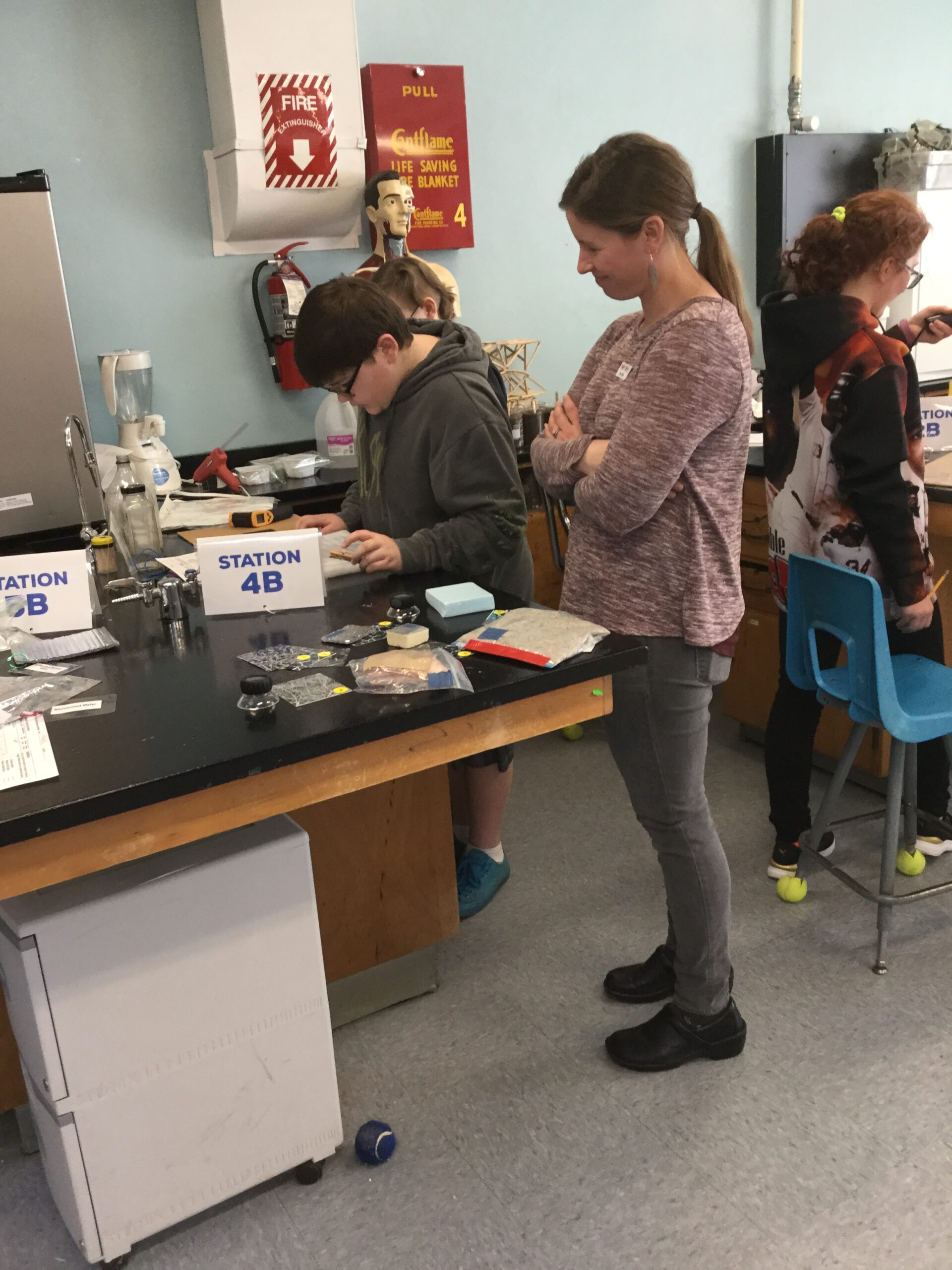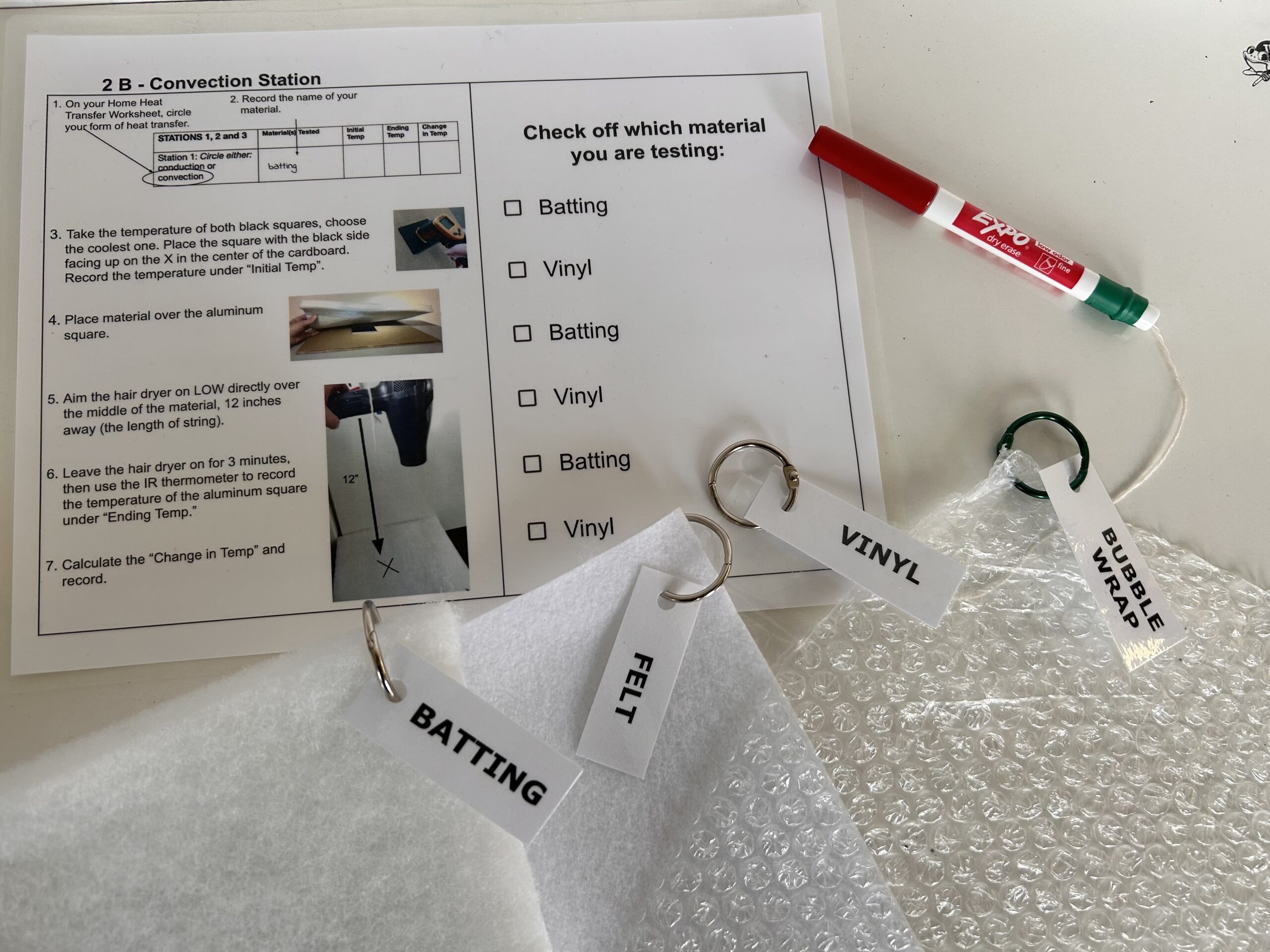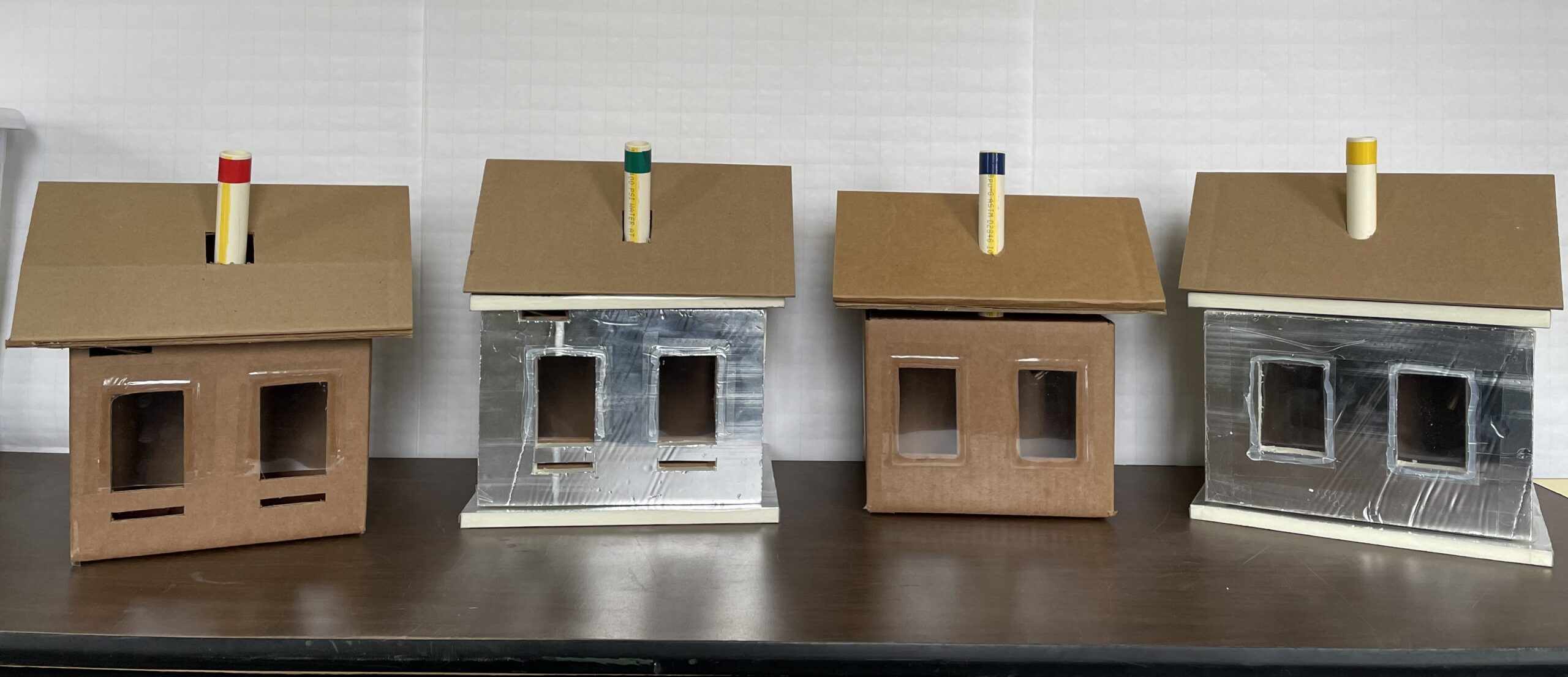$60.00
Curricula Kit: How/why does keeping homes warm impact the temperature of Earth’s atmosphere? How can we decrease this impact yet keep our homes warm and cozy?
Description
Middle and high school students identify visible and invisible products of fuel combustion, then safely investigate heat transfer phenomena involving convection, conduction, and radiation. They figure out how heat moves in and around buildings and test strategies to slow undesired heat transfer. Then they design, insulate and tighten up miniature model homes, testing their designs as part of the engineering process. The class applies their learning to analyze real buildings that they live and work in. Students leave with strategies to hold heat in buildings and a deep understanding of why conserving heat makes a difference to Earth’s climate.
Free download of the storyline here.
WHAT’S IN THE KIT?
Kit includes: Materials for conduction and convection experiments, combustion demos, pre-made model houses, insulation material testing, IR thermometers for student home investigations, engineering challenge materials for students to design and insulate mini (cake box) houses, materials for investigating climate science through the modeling climate science experiment and more.
-
- Click here for the full Home Heat Transfer kit inventory.
- Click here for the HOT Engineering Design Challenge kit inventory (included in a regular HHT kit rental).
- Click here for the Two Earth model inventory (modeling climate science)
Kit size: 4 large totes, 1 medium tote, +2 small totes.
- Kit can be broken up into four modules (request as many modules as you need):
- Home Heat Storyline kit (conduction, convection, & combustion investigation materials, multiple IR thermometers for student home investigations)
- Model homes & material testing equipment
- Home Heat Transfer Engineering Challenge
- Modeling Climate Science/ Two – Earth’s
Additional information
| Type of Material | |
|---|---|
| State | |
| Grade Band | |
| Topic | |
| Sponsored Products | NHSaves |
Teacher Reviews
What teachers had to say:
Standards Addressed
NGSS STANDARDS ADDRESSED
MS-ESS3-5 Earth & Human Activity: Ask questions to clarify evidence of the factors that have caused the rise in global temperature over the past century.
MS-PS3-3 Energy: Apply scientific principles to design, construct, and test a device that either minimizes or maximizes thermal energy transfer.
MS-PS3-4 Energy: Plan an investigation to determine the relationships among the energy transferred, the type of matter, the mass, and the change in the average kinetic energy of the particles as measured by the temperature of the sample.
MS-ETS1-1 Engineering Design: Define the criteria and constraints of a design problem with sufficient precision to ensure a successful solution, taking into account relevant scientific principles and potential impacts on people and the natural environment that may limit possible solutions.
MS-ETS1-2 Engineering Design: Evaluate competing design solutions using a systematic process to determine how well they meet the criteria and constraints of the problem.
MS-ETS1-4 Engineering Design: Develop a model to generate data for iterative testing and modification of a proposed object, tool, or process such that an optimal design can be achieved.



